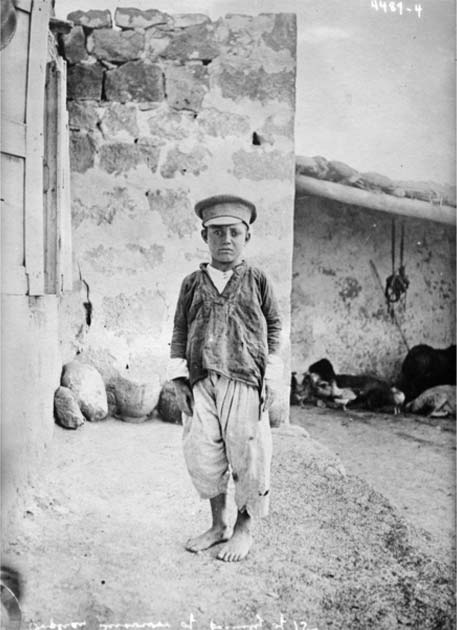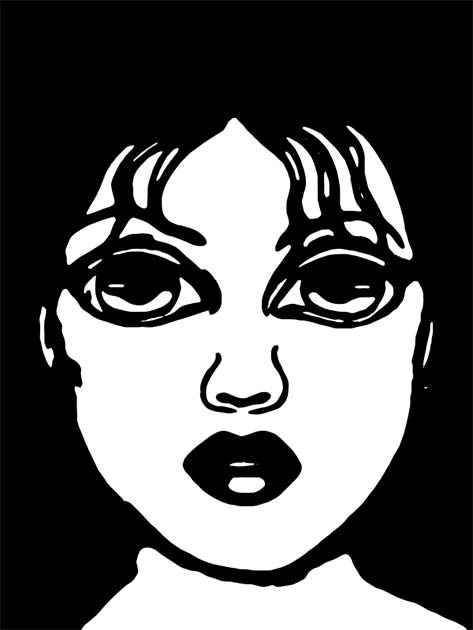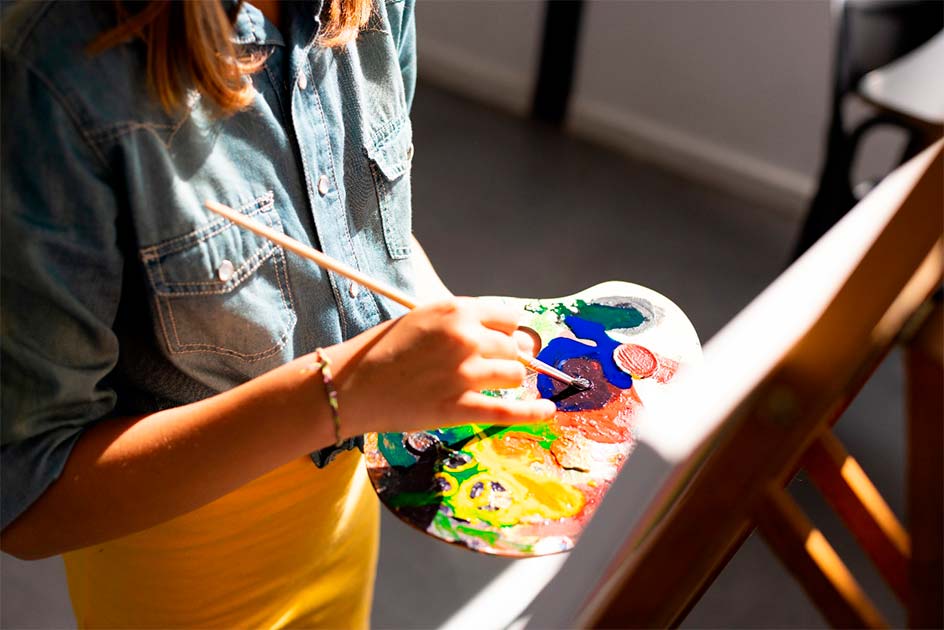Throughout history, women have had men take credit for their work. In the 1600s, women artists often used male names to sell their artwork or display it in museums because women were believed incapable of creating beautiful works of art.
This changed with time, and women became recognized for their work, but some women had men steal their show and benefit financially from fraud. Auguste Rodin hid that over the course of 20 years, a student (then lover) of his named Camile Claudel worked on some of the most complex elements of his sculptures, like the hands and feet of the figures in the work The Gates of Hell.
Marcel Duchamp claimed credit for his infamous urinal sculpture, Fountain, but he didn’t create it. Duchamp wrote a letter to his sister explaining that a female friend of his who used the pseudonym Richard Mutt sent him a urinal as a sculpture.
The urinal is signed R. Mutt, but Duchamp said the name Mutt came to him because the urinal was “purchased from JL Mott Ironworks Company,” and he simply changed Mott to Mutt. The actual creator of the Fountain and several other sculptures Duchamp was known for was created by Baroness Elsa von Freytag-Loringhoven.
While these examples are not widely known, the story of Walter and Margaret Keane became well known due to a sensational court case and the 2014 film Big Eyes. What happened with the Keanes?
Walter and Margaret Keane
Walter Keane was born in Lincoln, Nebraska, on October 7, 1915. In the 1930s, he moved to Los Angeles, California, and attended Los Angeles City College. After graduating, he moved to Berkeley, California, with his first wife, Barbara Ingham.
The Keanes forged a career in real estate, and both were real estate brokers. After living abroad with their daughter Susan, the Keanes returned to Berkeley and created an “educational toy business” that used puppets to teach French to children. Their intricate puppets were sold in Saks Fifth Avenue and other high-end stores.

Barbara became the department head of Dress Design at the University of California, Berkeley, and Walter Keane closed the toy company and his real estate firm to pursue painting full-time. The Keanes divorced in 1952, and in 1955 Walter married his second wife, Margaret.
Margaret Keane (born Peggy Doris Hawkins) was born in Nashville, Tennessee, on September 15, 1927. At age two, Margaret underwent mastoid surgery (the mastoid is a part of the temporal bone in the skull).
Her eardrum was permanently damaged during the procedure, and she was hearing impaired afterward. Instead of learning to read lips to understand people when they spoke to her, Margaret would watch their eyes in order to understand them. Margaret began drawing as a child and began taking formal art classes at the Watkins Institute in Nashville, Tennessee.
Margaret attended the Traphagen School of Design in New York City when she was 18 and worked painting infant items like cribs and clothing before fully devoting her time to painting portraits. When she met Walter, Margaret was also married to a man named Frank Richard Ulbrich, but the two divorced in 1955 before she married Walter Keane.
As an artist, Margaret Keane painted with acrylic and oil paint, and the subjects of her art were children, women, and animals like cats, dogs, and horses. Her paintings were known for having big eyes and a rather haunting stare.
Margaret and Walter Keane have wildly different stories about what happened, but not long after the pair married, Walter started to sell her “big eyes” paintings at the “Hungry I” comedy club in San Francisco. Margaret said she went with him to the club once while Walter sold her artwork outside the venue, and someone approached her and asked, “Do you paint too?”
- Death of an Artist: Did Vincent van Gogh Kill Himself?
- The Great Stock Exchange Fraud: Lord Cochrane’s Napoleonic Lies?
Margaret was confused because she did paint, and her husband was selling her paintings only a few feet away. Then she realized something that changed her life, her husband, Walter Keane, was taking credit for her paintings.
Walter would tell people that when he was in Berlin in 1946, he saw children with big wide eyes fighting over scraps of food in a pile of trash. In his memoir, Walter Keane wrote, “As if goaded by a kind of frantic despair, I sketched these dirty, ragged little victims of the war with their bruised, lacerated minds and bodies, their matted hair and runny noses. Here my life as a painter began in earnest.”

While Walter was definitely in Europe in 1946 and likely saw children starving and living in the streets of post-war Berlin, he never sketched the big-eyed children; it was all a lie.
Big Eyes and Bigger Lies
Margaret Keane said that after realizing her husband was claiming her work as his own, she questioned him at home, and of course, he was full of excuses. He told her they needed the money and that people were more likely to buy artwork because they spoke directly to the artist who created it.
Margaret said that Walter told her, “People don’t want to think I can’t paint and need to have my wife paint. People already think I painted the big eyes, and if I suddenly say it was you, it’ll be confusing, and people will start suing us.” While that made Margaret nervous, Walter also said that he would have her killed if she told anyone the truth.
Wanting to avoid lawsuits or being taken out by a hitman, Margaret convinced herself that letting Walter claim her work as his own was the best option, and she was happy that her art was being seen and purchased.
In 1957 Walter staged several exhibitions of “his” paintings in New York City, Sausalito, New Orleans, and Chicago. He sold the artworks on display, and suddenly the big eyes paintings became incredibly popular.
Millions of postcards of the big eyes were sold, and the paintings grew to become some of the best-selling works of art in the 1960s. Walter Keane continued to build this fictional story about himself, his art, and his wife, Margaret. Margaret Keane had to stand by her husband as he claimed to have created her much sought-after paintings and could only smile and make statements about how talented her husband was.
To make matters worse, Margaret never saw a dime of the money she deserved from the sale of her art. Margaret said that while she did not earn any money, the family moved into a large gated fancy home with a pool and a full staff of domestic servants.

All she did was paint, but it was always in secret and always under duress. While the Keanes had a house full of staff and many guests including rich and famous people such as the Beach Boys, nobody knew Margaret was inside painting.
She was locked in a room with the curtains shut while she painted 16 hours a day, and Walter lived the high life and had several affairs in their home. If Walter wasn’t home, Margaret said he would call her every hour to ensure she hadn’t left the room or opened the curtains.
While it might not have been recognized in the 1950s and 1960s, what was happening to Margret Keane was a victim of domestic abuse. Domestic abuse is not just physically harming an intimate partner but includes financial, psychological, and emotional abuse.
- Michelangelo’s Fakes: Was the Artist A Fraud Before He Was A Master?
- (In Pics) Six Paintings from History with a Hidden Secret
Margaret Keane was not allowed to have friends and was kept isolated, so the only person she had in her life was Walter, whom she relied on financially. Margaret had a daughter from her first marriage and felt that Walter’s threats to call his mafia friends to “take her out” were so serious, and she stayed quiet to protect her daughter and herself. This lasted for ten years until the pair divorced in 1965.
Margaret Finally Speaks
In 1970, Margaret was on a radio show where she came forward and said she was the painter of the big eyes paintings, not her ex-husband Walter. In order to provide proof that she was the true artist, Margaret Keane challenged Walter Keane to a public painting contest.
Of course, Walter, who couldn’t paint to save his life, didn’t show up to the contest. The two began a vicious fight, with each Keane claiming to have been the one to create these famous large-eyed children and women. In 1984, Walter told USA Today that Margaret was only claiming credit for his paintings because she thought he was dead.
That statement did not amuse Margaret, and she filed a lawsuit for slander against Walter Keane and USA Today. In 1986 Margaret Keane (age 58) and Walter Keane (age 70) saw each other for the first time in almost 20 years at the slander trial in Honolulu.
The trial lasted three and a half weeks and exposed the truth about Margaret’s suffering. Margaret Keane was honest and acknowledged that she did go along with the lie during their marriage, only because she was afraid Walter would kill herself and her daughter.
The court sat and watched as Margaret Keane painted the face of a young boy with the iconic large eyes the world had fallen in love with. Margaret’s attorneys challenged Walter to do what Margaret did, paint live before the judge, jury, and audience. Walter, who served as his own lawyer, claimed that he had a shoulder injury and was taking medication to ease the pain and was not in a state where he could paint.
Margaret came to court with unmistakable proof that she was the true painter of the works. She brought several examples of art she created as a child. The paintings had children with large eyes, and this style only developed as she grew older.

The testimony of the domestic abuse and her live painting was enough to convince the jury that she had faced emotional distress and a damaged reputation due to Walter, and he was ordered to pay her $4 million. Even after the ruling in federal court, Walter Keane refused to admit he was a fraud, tried to appeal the verdict, and claimed that he was broke. Margaret moved to Hawaii and continued to paint until she died at the age of 94 on June 26, 2022.
Intellectual Property
In 1976 the United States revised the Copyright Act, initially passed in 1790. The original act protected writers’ right to ownership of their own work, and the revision protected those who created works of music, artistic works, and dramatic works.
Only the original creator can claim copyright and has the right to authorize exclusive rights to their work and can grant permission for others to: reproduce copies of the work, create derivative works (using an existing image and letting another artist alter or change aspects of the original work), distribute copies to the general public for sale, or permits rental, lease, or loans of the artwork as decided by the artist.
Because Walter was not the true creator of the big eye paintings, the law protected Margaret’s rights of ownership, which is why Walter had to pay her $4 million. Copyright and intellectual property are incredibly complex, and many artists are unaware that they have the ability to legally claim ownership of their own artwork by registering it for a copyright or trademark.
An example of an artist who was unaware of copyright law and could never claim ownership (or the right to earn money from the use of his work) was Robert Indiana, who created the LOVE sculpture that has been used by artists and brands across the globe. Robert never earned money for the sale of his work because he didn’t seek copyright protections.
Copyright protects a piece for the entire lifetime of the artist who created it, plus an additional 70 years after they die. When the copyright ends after 70 years, the work becomes part of the public domain. Anyone can use public domain images for anything without the risk of legal repercussions. An example of a piece in the public domain is the Mona Lisa.
Top Image: Walter Keane became famous as an artist, but the art he sold was actually painted by his wife Margaret. Source: Gorodenkoff / Adobe Stock.